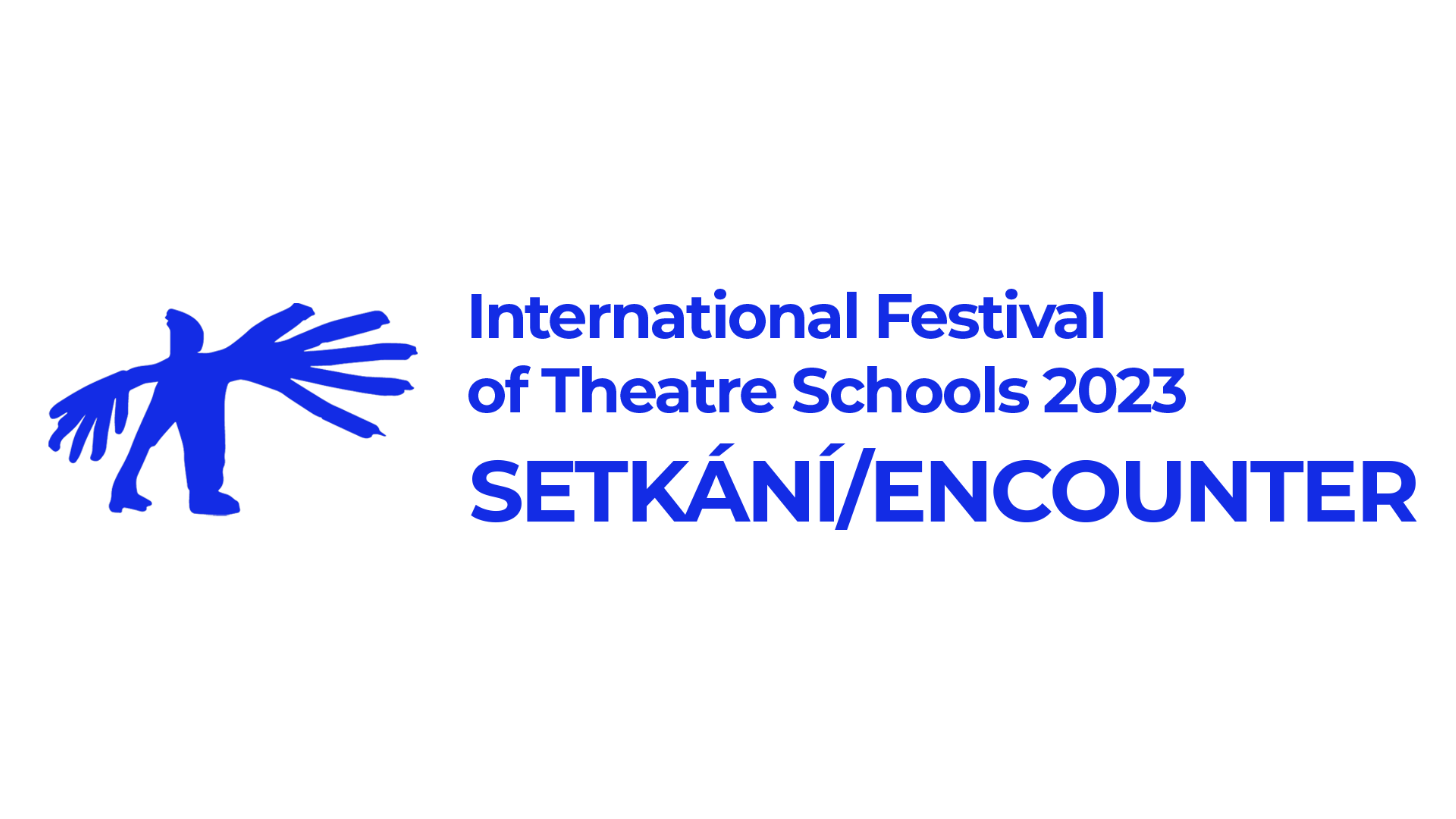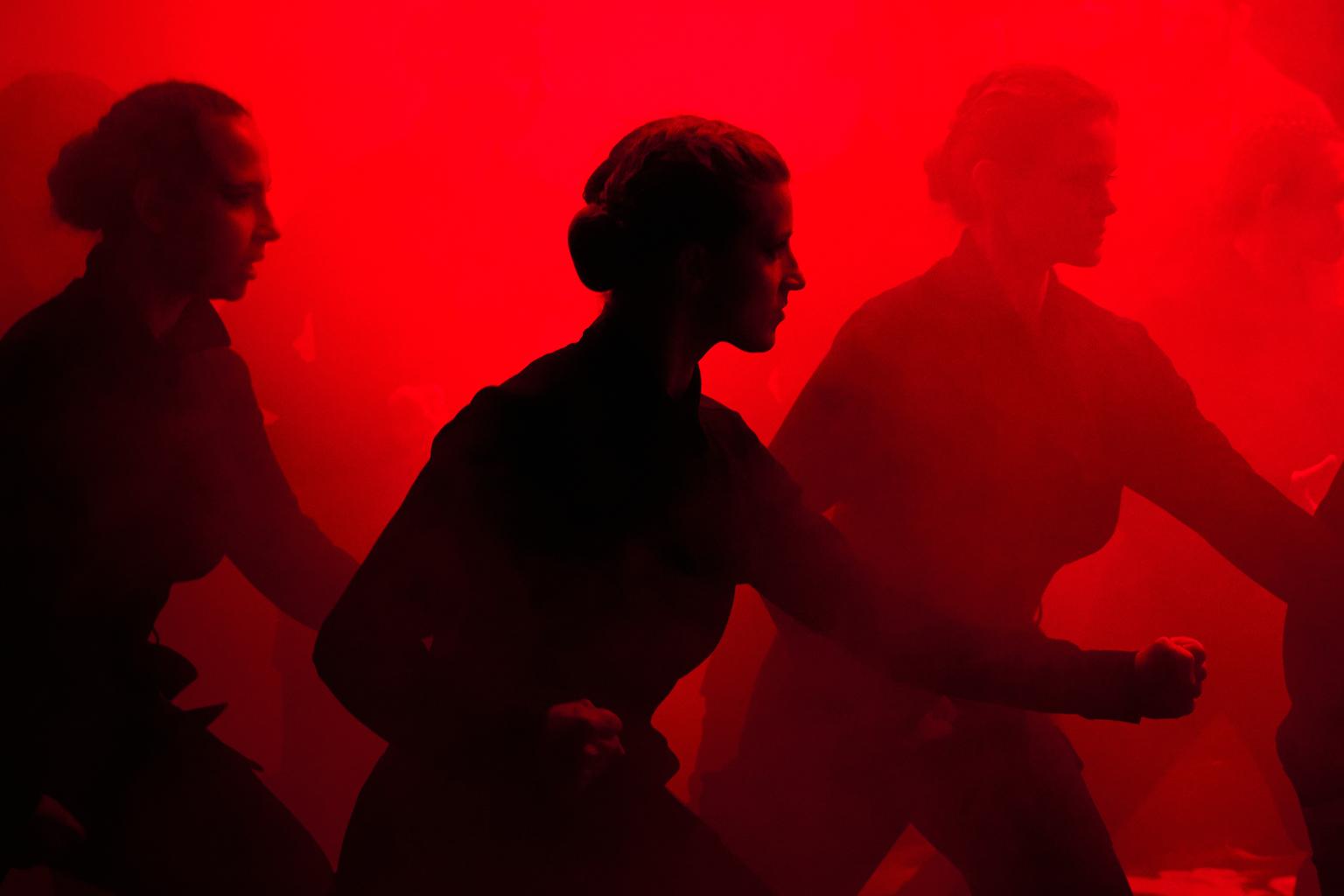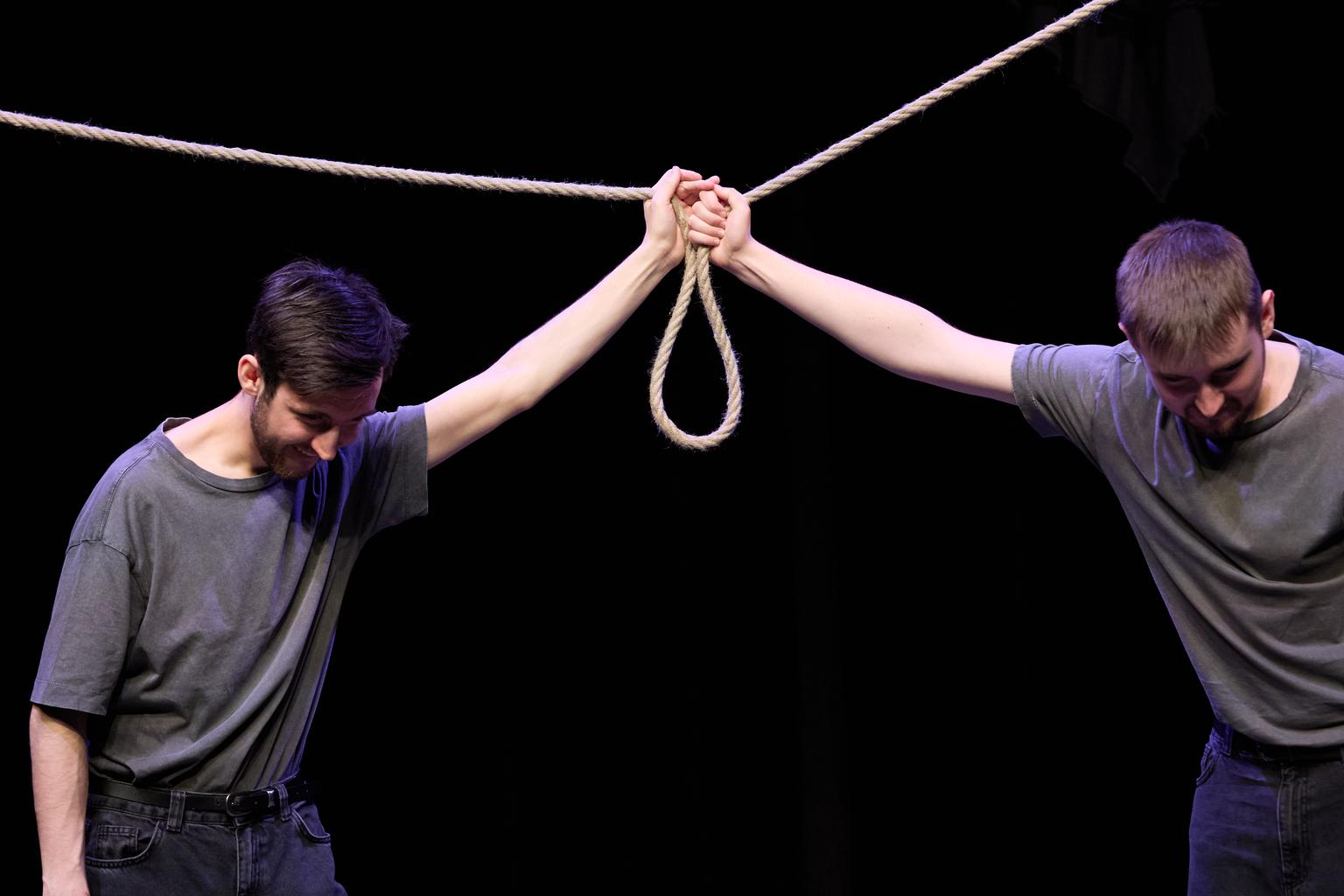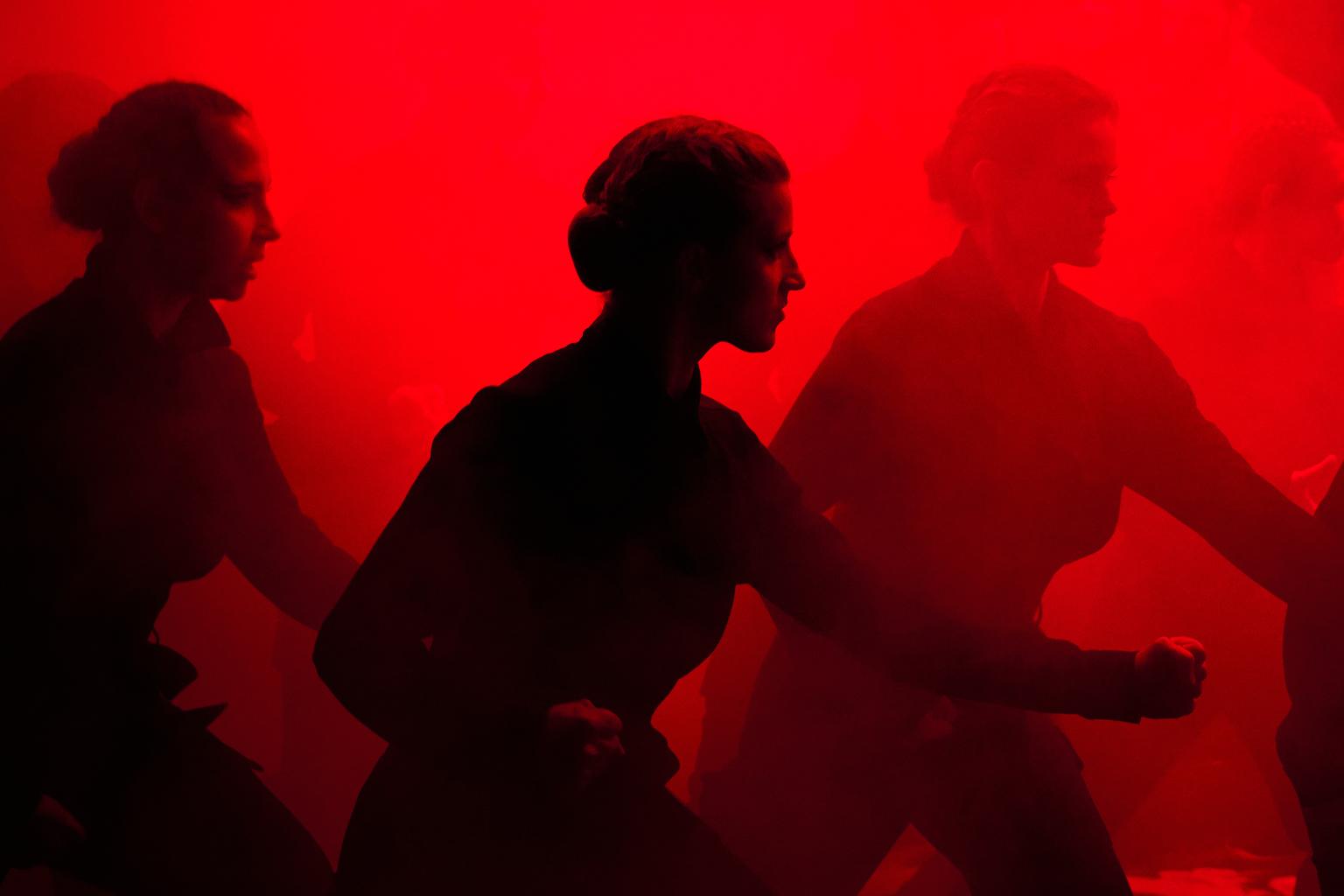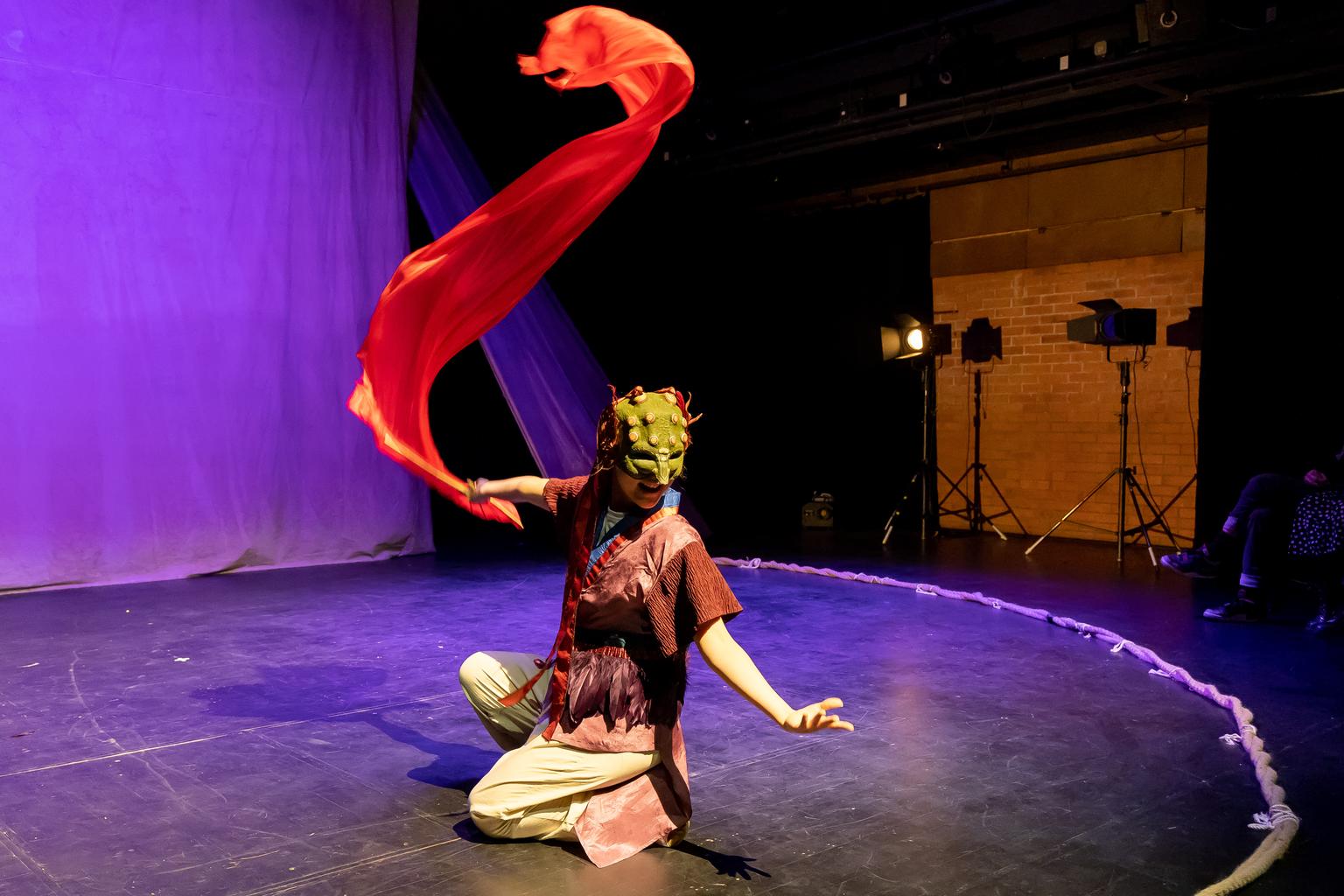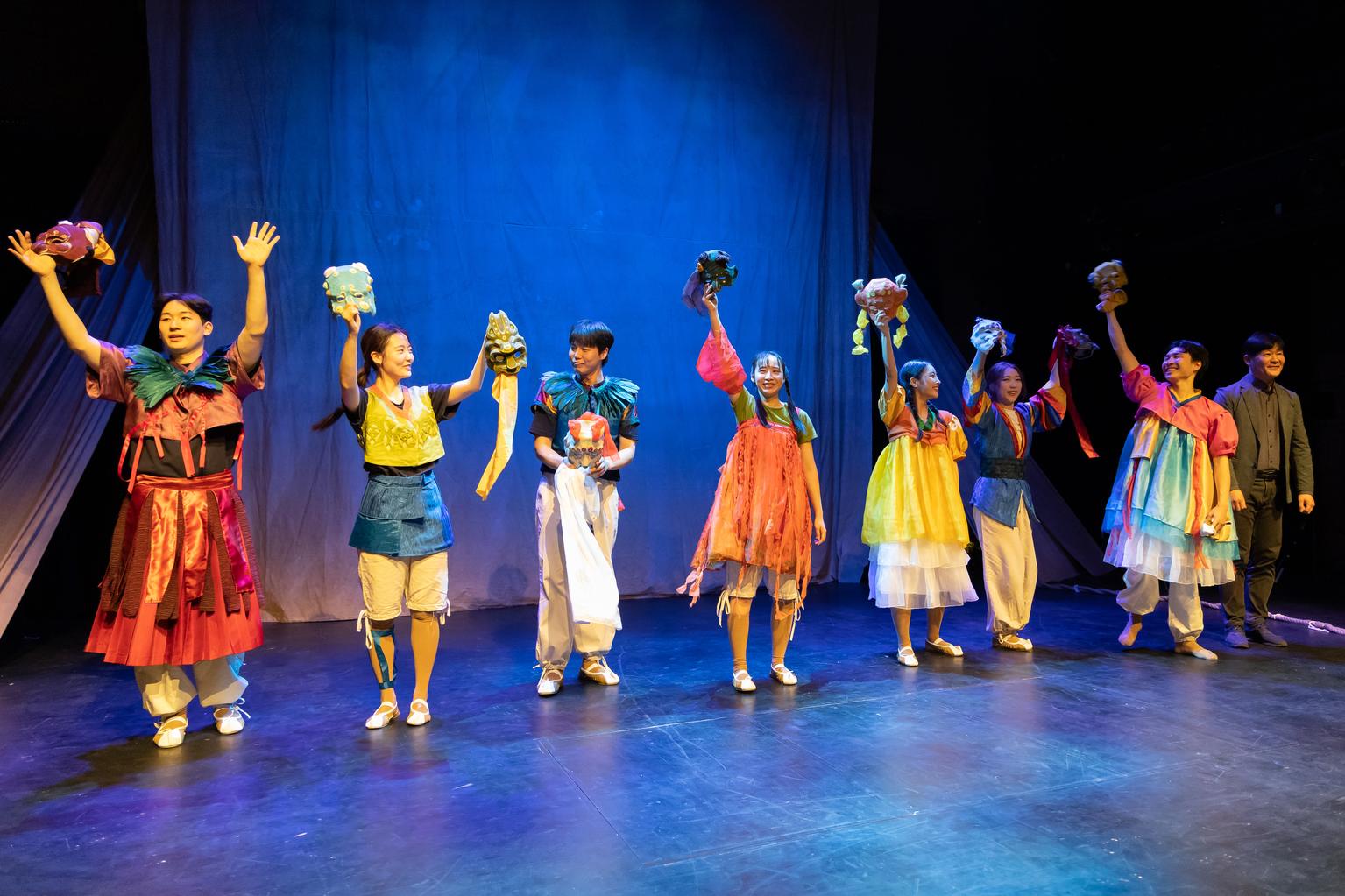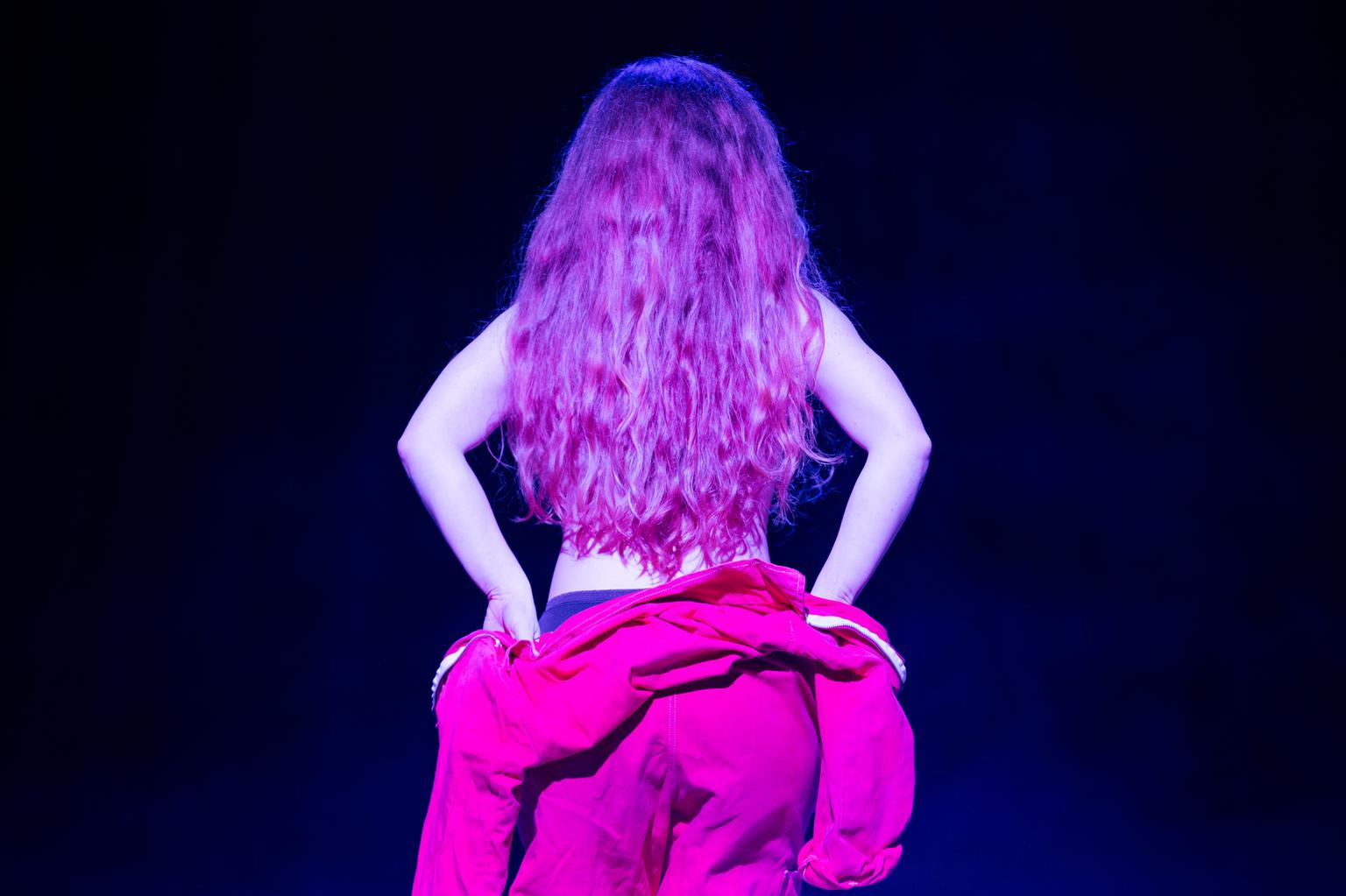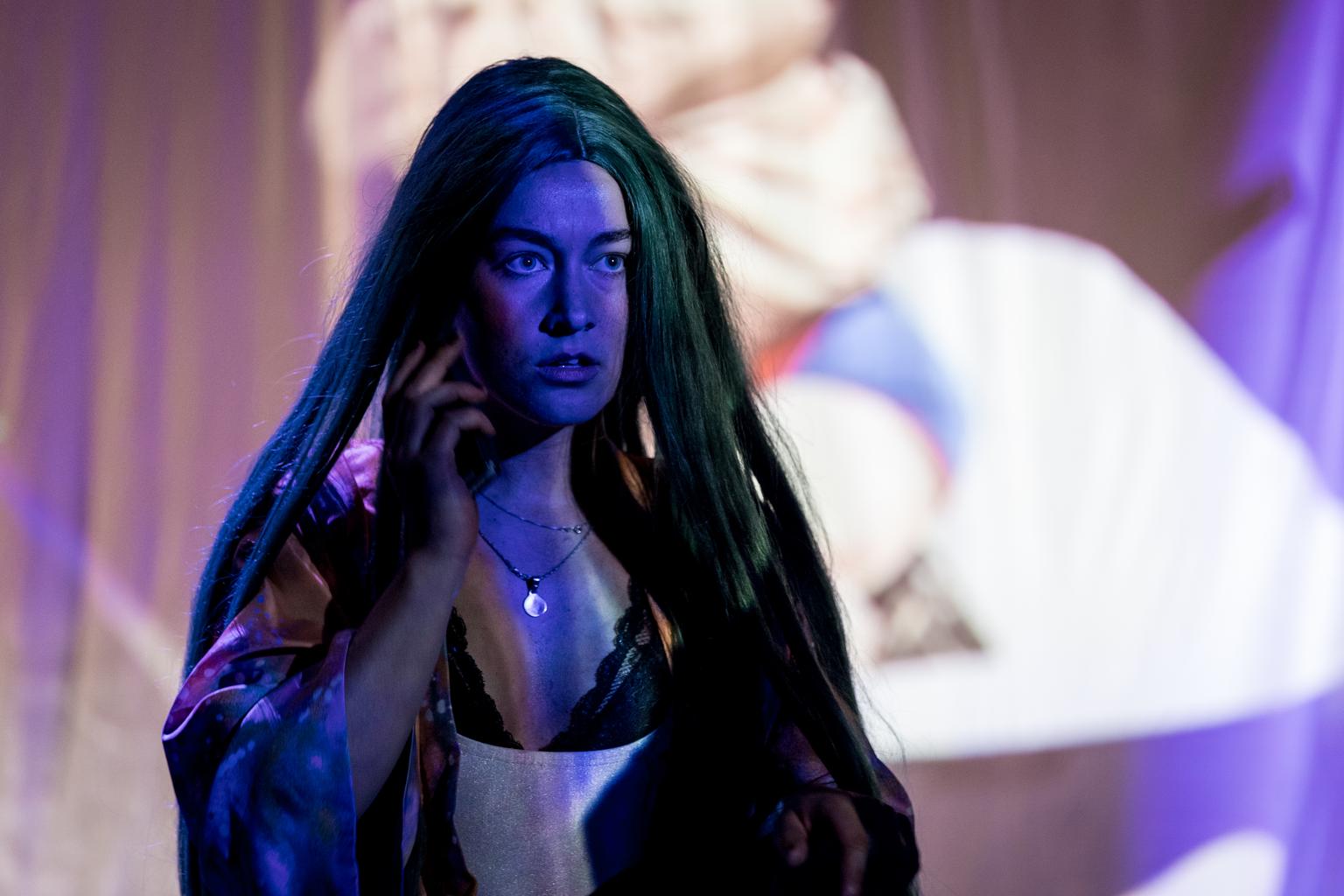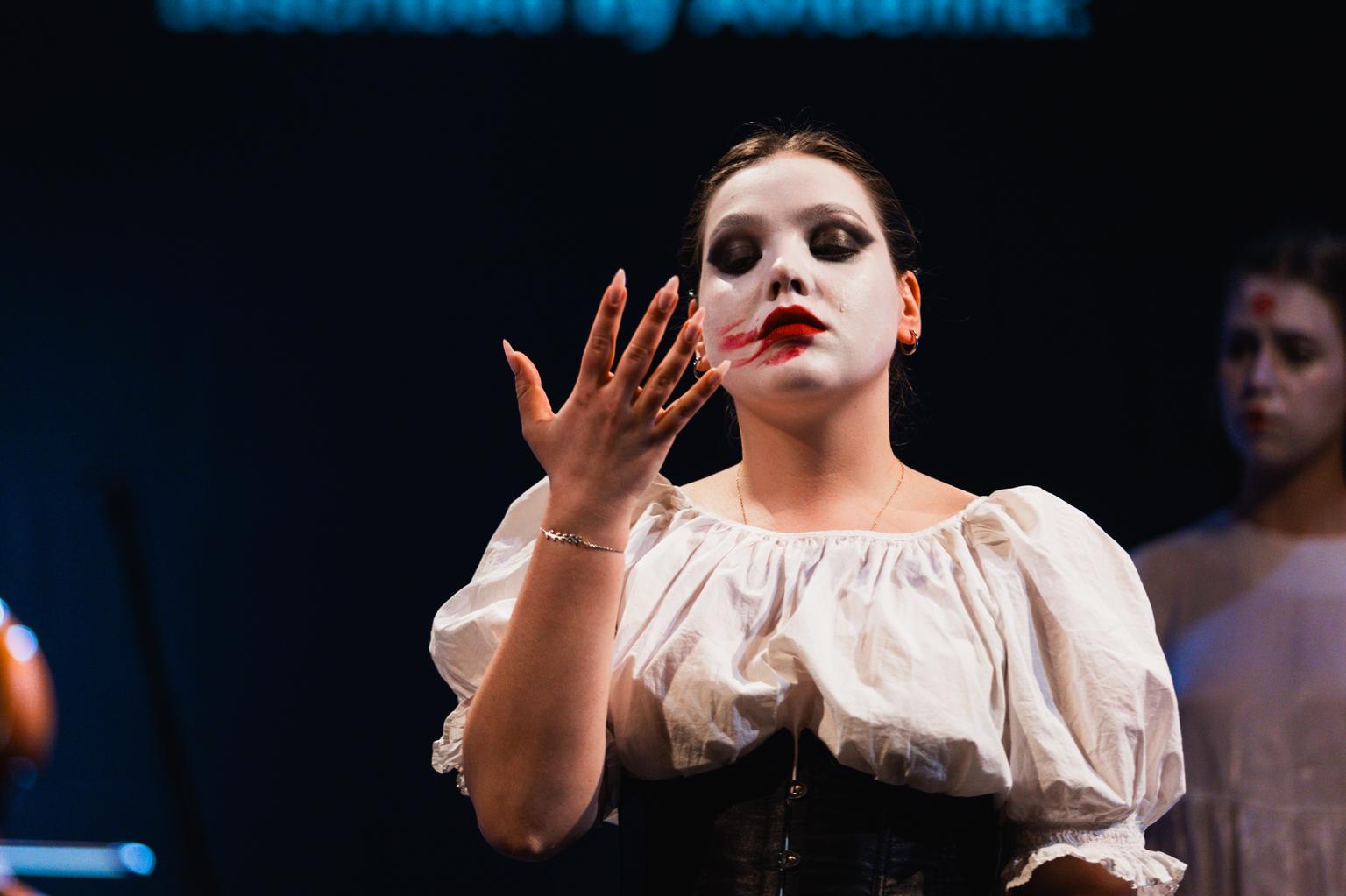
Kabaretný večer bez hraníc
Na slovenských javiskách dostávajú študenti herectva len zriedka príležitosť experimentovať. Majú možnosť dotknúť sa kabaretného štýlu či autorskej tvorby, no reálne to využívajú len výnimočne. O to výraznejší je pre mňa kontrast s inscenáciou Psyacha Buda (Psia búda) študentov Národnej univerzity Ivana Franka vo Ľvove, ktorí na scéne predvádzajú až revoltu. Nepôsobia ako jednotlivci, ale ako dokonale prepojená skupina. Hovoriť o individuálnych výkonoch je takmer nemožné – napriek tomu, že každý dostáva priestor herecky sa prejaviť, energia tu funguje kolektívne. Ocitáme sa na kabaretnom večere v Psej búde, v priestore pripomínajúcom podzemný bar. Atmosféru dotvára tajomne pôsobiaci barman a znepokojená klaviristka, ktorí diváka sprevádzajú už od príchodu do sály.
